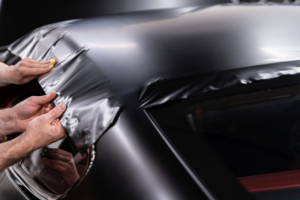
Hydraulic torque wrenches are a staple in the attachment of commercial bolting applications. These wrenches are necessary to accomplish high torque outputs, higher than 600 feet pounds on a bolt. Manual clicker wrenches efficient in getting to 1000 ft. lbs. do exist, yet they are completely hard to utilize. Power devices are easier on the assembler and cause better precision, as well as repeatability.
Given that hydraulic tools are having a high torque result, they require to get powered through a hydraulic pump. This “power pack” or pump passes on high-pressure hydraulic pressure via a hydraulic tube in order to create the target torque output.
If calibrated appropriately, the hydraulic pump, such as TorcStark, will permit the individual to transform the torque setting properly. Hydraulic pumps can be powered by either pneumatically driven, or electrical power.
Hydraulic torque tools can have a minimum torque of 100 ft. lbs. as well as a maximum torque of 120,000 ft. lbs. Both the minimum and optimum torque depend on the capability, as well as the dimension of the hydraulic device. A hydraulic torque wrench is particularly helpful on large screws, or 1-inch diameter or even higher. In the sections below, we’ll describe exactly how hydraulic torque wrench function, beginning with the pumps that power them, as well as functioning outside of the devices themselves.
Hydraulic Pump, or “Power Load”: Where it Starts
A typical pump can create up to 10,000 PSI, and enable you to readjust the torque setup on the hydraulic wrench. A lot of pumps deal with all significant device brands.
Pumps are either air-driven or electrical, though you’ll usually see pneumatically-driven hydraulic pumps utilized in hydrocarbon handling. Utilizing an electric pump for some bolting applications might require you to obtain a “Hot Job License,” due to the electrical power.
For every hydraulic torque wrench, a hose pipe attaches the hydraulic pump toward the hydraulic wrench itself. The hose pipe connections, or couplers, are established so that you cannot connect the hose pipe improperly, the male/female attachments need the appropriate suit in order to connect. For that reason, connecting the tube to the pump is instinctive, as well as very easy.
Hydraulic Pipe: Watch on This Link
After you power the pump, you are going to adjust the pressure for matching the correlated aimed torque value over the calibration sheet. The pipe is affixed to the hydraulic device on what is called the uni-swivel. Rationally, the uni-swivel can take care of up to 10,000 PSI.
IMPORTANT NOTE: Hydraulic hose pipes SHALL be rated for a 4:1 hydraulic pressure, which suggests ranked for 40,000 psi.
There are ready to retract or break through. The development will load the piston with hydraulic liquid, which then develops the piston to push on the drive pawls. The drive pawls revolve, which triggers the nut to revolve.





